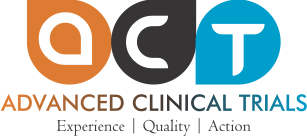Once a dose or range of doses is determined, the next goal is to evaluate whether the drug has any biological activity or effect. Phase II trials are performed on larger groups (100-300) and are designed to assess how well the drug works, as well as to continue Phase I safety assessments in a larger group of volunteers and patients. Genetic testing is common, particularly when there is evidence of variation in metabolic rate. When the development process for a new drug fails, this usually occurs during Phase II trials when the drug is discovered not to work as planned, or to have toxic effects.
Phase II studies are sometimes divided into Phase IIA and Phase IIB.
Phase IIA is specifically designed to assess dosing requirements (how much drug should be given). Phase IIB is specifically designed to study efficacy (how well the drug works at the prescribed dose(s)). Some trials combine Phase I and Phase II, and test both efficacy and toxicity.
Trial design Some Phase II trials are designed as case series, demonstrating a drug’s safety and activity in a selected group of patients. Other Phase II trials are designed as randomized controlled trials, where some patients receive the drug/device and others receive placebo/standard treatment. Randomized Phase II trials have far fewer patients than randomized Phase III trials. Example Cancer Design In the first stage, the investigator attempts to rule out drugs which have no or little biologic activity. For example, he may specify that a drug must have some minimal level of activity, say, in 20% of participants. If the estimated activity level is less than 20%, he chooses not to consider this drug further, at least not at that maximally tolerated dose. If the estimated activity level exceeds 20%, he will add more participants to get a better estimate of the response rate. A typical study for ruling out a 20% or lower response rate enters 14 participants. If no response is observed in the first 14 participants, the drug is considered not likely to have a 20% or higher activity level. The number of additional participants added depends on the degree of precision desired, but ranges from 10 to 20. Thus, a typical cancer phase II study might include fewer than 30 people to estimate the response rate. Some researchers argue that phase II studies are generally smaller than they ought to be.
Your Proof-of-Concept studies are supported by early phase trials, advanced technologies, high quality data, will help us get regulatory approval. In order to make the process of Proof-of-Concept studies a success we engage a team of leaders with great depth of knowledge in patient populations, SAS expertise, data capture, pharmacovigilance we aim to take your compound to the next stage of clinical trials. We customise each and every concept of the clinical trials to ensure high quality data is produced.
